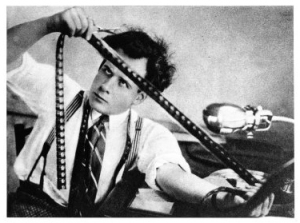In the Osgood and Hinshaw chapter The Aesthetics of Editing, they discuss the formal elements of the editing process and how a completed project can come to full fruition. They begin by starting that “post production defines the story and brings it to life” (227).
The editing process is by far one of the most essential parts of a project. It is one that takes much hard work and effort, and yet plays the most silent role. Transparency of the editing process is crucial for a work to even be considered to have value. If viewers notice when edits were made and it doesn’t look cohesive, then they will automatically assume that the work was sloppily put together and the wrong people were hired for the job.

The Psychology of Editing
The first rule of thumb is that editing must be purposeful. Edits should be cohesive and used to give the most meaning.
B-roll is used in non-fiction storytelling to further illustrate the topic being discussed.made to give viewers more insight into the shot they are watching, or to give them another perspective of what is taking place on screen.
Logical arrangement of shots is most effective when telling a narrative story. This allows viewers to get a sense of time and space where the narrative is taking place.Sounds should be paired with images in a way that elaborates on the image that appears with it. These two should be paired coherently.
Cuts also allow for the compression of time along a narrative. If the director has five minutes of continuous film, but can only use thirty seconds, the editor must cut out the least affective parts of film and create a montage of shots to create the main idea of the scene.
Editors are also responsible for setting the rhythm and pacing of the cuts that will dictate how fast the story will move along.
Continuity
Continuity is the consistency from shot to shot and within scenes.
Physical continuity refers to the items that are used within the production. This includes the clothing that actors wear within the scenes, or items that they may interact with from shot to shot within a scene.
Technical continuity is the maintaing of technical levels such as audio levels, lighting, white balance, etc. throughout shots within a scene.
Cinéma Vérité is a genre that was popularized in French cinema of the 1950s in which attention is heavily placed on the truth of the shot. It created the realization that loose and poor editing can make a project seem amateurish.
Establishing shots should be used to establish where exactly the scene is taking place. This could be in the form of a wide shot of a city or the sign of an office building.
Transitions
Transitions are the change from on shot to another.
Cutting is the simple act of cutting one shot short and inserting another shot to move the narrative forward.
B-roll should be used to cover any potential jump cuts within an interview. If multiple cuts are made in an interview, then b-roll must be used to cover the cuts.
L-cuts are used when the picture and sound start at slightly different times.
Reveal edits allow editors to change time and location in order to startle the audience.
Parallel editing allows for the audience to view the same action, but taking place from another angle or perspective.

A filter can be used on a clip to change the color or another attribute.
Compositing is the layering of tracks on top of another. This allows for the viewer to view two or more clips at the same time, but on top of one another. This technique can be confusing and is thus used sparingly.
Key frames are a specific frame within the time line.
It is only through editing that stories can become fully realized and be given meaning. Today with digital editing software, the editing process has become much more streamlined that what it used to be at the dawn of the filmic age.
This video illustrates some simple techniques that can be used to tighten up a video’s editing and create more cohesive shot sequences.
What would be your opinion of a film that had minimal editing?
In what ways do you feel that editing can be used to enhance a story line?